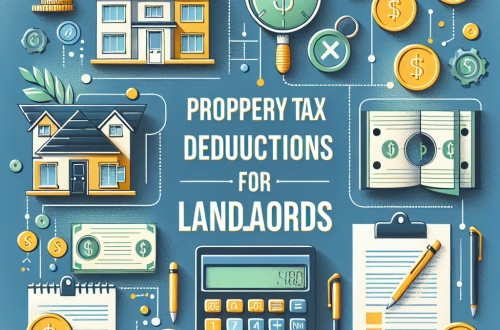Article Summary
Writing off promotional materials and samples can significantly impact the financial health of businesses and individuals by reducing taxable income. For businesses, especially small businesses and startups, these write-offs can lower operational costs and improve cash flow. Individuals who use promotional materials or samples for business purposes may also benefit. However, navigating the tax laws surrounding these deductions can be complex, with strict eligibility criteria and documentation requirements. Missteps can lead to audits or disallowed deductions, making it essential to understand the nuances of federal and state tax regulations.
What This Means for You:
- Immediate Action: Identify all promotional materials and samples used for business purposes and gather supporting documentation.
- Financial Risks: Incorrectly claiming deductions can result in penalties, interest, or audit scrutiny.
- Costs Involved: Ensure that the expenses are directly tied to your business activities to qualify for deductions.
- Long-Term Strategy: Maintain accurate records and consult a tax professional to maximize deductions and minimize risks.
Writing Off Promotional Materials And Samples:
”Writing Off Promotional Materials And Samples” Explained:
Under U.S. federal tax law, promotional materials and samples are considered deductible business expenses if they are “ordinary and necessary” for your trade or business. According to the IRS, an ordinary expense is one that is common and accepted in your industry, while a necessary expense is one that is helpful and appropriate for your business. Promotional materials include items like brochures, flyers, and branded merchandise, while samples are products given away to potential customers to generate future sales. These expenses are typically deducted under the category of advertising and marketing costs.
State tax laws generally align with federal guidelines but may have additional requirements or limitations. For example, some states may have caps on the amount of advertising expenses that can be deducted or specific rules for apportioning expenses if the business operates in multiple states. It’s crucial to review both federal and state tax codes to ensure compliance and maximize your deductions.
”Writing Off Promotional Materials And Samples” Principles:
The “ordinary and necessary” principle is the cornerstone of deducting promotional materials and samples. To qualify, these expenses must be directly related to your business activities and must not be lavish or extravagant. For example, branded pens or tote bags given away at a trade show would typically qualify, while luxury gifts for personal acquaintances would not. Additionally, if promotional materials are used for both personal and business purposes, only the business portion is deductible. Accurate apportionment is essential, and failing to do so can result in disallowed deductions.
Mixed-use expenses require careful documentation. For instance, if you use a portion of your home office for business and another portion for personal use, you must allocate expenses accordingly. The same principle applies to promotional materials and samples. Keeping detailed records of how, when, and where these items are used can help substantiate your claims during an audit.
Standard Deduction vs. Itemized Deductions:
Businesses and self-employed individuals typically deduct promotional materials and samples as business expenses on their Schedule C or other business tax forms. These deductions are separate from the standard deduction, which is available to individuals who do not itemize. For 2023, the standard deduction is $13,850 for single filers, $27,700 for married couples filing jointly, and $20,800 for heads of household. Businesses, however, must itemize their deductions, including promotional expenses, to claim them.
Individuals who are employees and incur work-related promotional expenses may deduct these costs as unreimbursed employee expenses, but only if they itemize their deductions. Due to the suspension of miscellaneous itemized deductions under the Tax Cuts and Jobs Act (TCJA) from 2018 to 2025, most employees cannot currently claim these expenses. However, self-employed individuals and business owners can still deduct eligible promotional costs.
Types of Categories for Individuals:
For individuals, promotional materials and samples may fall into several categories depending on their use. Self-employed individuals can deduct these expenses as business costs on Schedule C. Freelancers and independent contractors may also qualify for these deductions if the materials are used to generate income. Employees who pay for promotional materials out of pocket may have limited options due to the TCJA’s restrictions. However, if an employer reimburses these expenses, they are generally tax-free to the employee and deductible by the employer.
Individuals who use promotional materials for side gigs or part-time businesses should ensure that these expenses are documented and directly related to income-generating activities. For example, a photographer who gives away sample prints to attract clients can deduct the cost of those prints as a business expense.
Key Business and Small Business Provisions:
For businesses, promotional materials and samples are often categorized under advertising and marketing expenses. These costs are fully deductible if they meet the “ordinary and necessary” criteria. Small businesses, in particular, can benefit from these deductions, as marketing is a critical component of growth. Examples include the cost of printing flyers, creating branded merchandise, or producing product samples for distribution.
Startups may also deduct these expenses, but they must be careful to distinguish between startup costs and ongoing business expenses. The IRS allows up to $5,000 in startup costs to be deducted in the first year of business, with the remaining amortized over 15 years. Promotional materials and samples used during the startup phase may qualify under this provision.
Record-Keeping and Substantiation Requirements:
The IRS requires businesses to maintain accurate records of all deductible expenses, including promotional materials and samples. Receipts, invoices, and logbooks detailing the date, amount, and business purpose of each expense are essential. Digital records are acceptable as long as they are legible and accessible. Records must be kept for at least three years from the filing date or two years from the payment date, whichever is later.
Insufficient documentation can lead to disallowed deductions during an audit. For example, if a business claims $10,000 in promotional expenses but cannot provide receipts or proof of distribution, the IRS may deny the deduction. Keeping detailed records not only protects against audit risks but also ensures that you maximize your eligible deductions.
Audit Process:
Audits related to promotional materials and samples typically focus on substantiation and compliance with the “ordinary and necessary” principle. The IRS may request documentation such as receipts, invoices, and written explanations of how the materials were used. Auditors may also inquire about the business purpose of the expenses and whether they were properly apportioned between personal and business use.
To prepare for an audit, businesses should ensure that all records are organized and readily available. If discrepancies are found, the IRS may impose penalties and interest on unpaid taxes. In some cases, businesses may be required to amend their tax returns or provide additional documentation to support their claims.
Choosing a Tax Professional:
Given the complexity of tax laws surrounding promotional materials and samples, consulting a tax professional is highly recommended. Look for a certified public accountant (CPA), enrolled agent (EA), or tax attorney with experience in small business or self-employed tax issues. A knowledgeable professional can help you navigate the eligibility criteria, maximize your deductions, and minimize audit risks.
When selecting a tax professional, consider their familiarity with both federal and state tax laws. Ask about their experience with promotional expense deductions and whether they provide audit support. A proactive approach to tax planning can save you time, money, and stress in the long run.
Laws and Regulations Relating To Writing Off Promotional Materials And Samples:
The primary federal law governing promotional materials and samples is Section 162 of the Internal Revenue Code (IRC), which allows deductions for ordinary and necessary business expenses. Additionally, IRS Publication 535 provides detailed guidance on deducting business expenses, including advertising and promotional costs. State tax laws vary, but most follow the federal framework with some modifications. For example, California’s Franchise Tax Board (FTB) has specific rules for apportioning business expenses across multiple states.
Key regulations include the requirement that promotional expenses be directly related to business activities and not personal in nature. The IRS also enforces strict substantiation requirements, as outlined in IRC Section 6001. Businesses must maintain adequate records to support their claims, and failure to do so can result in disallowed deductions.
For startups, IRC Section 195 allows the deduction of up to $5,000 in startup costs in the first year of business, with the remaining amortized over 15 years. Promotional materials and samples used during the startup phase may qualify under this provision. Businesses should consult IRS Publication 535 and their state tax authority’s guidelines to ensure compliance.
People Also Ask:
Q: Can I deduct promotional materials if I’m self-employed?
A: Yes, self-employed individuals can deduct promotional materials as business expenses on Schedule C. Ensure the materials are directly related to your income-generating activities and keep detailed records.
Q: Are product samples deductible?
A: Yes, product samples are deductible if they are given away to potential customers to generate future sales. The cost of the samples must be ordinary and necessary for your business.
Q: What records do I need for promotional expenses?
A: You should keep receipts, invoices, and logbooks detailing the date, amount, and business purpose of each expense. Digital records are acceptable as long as they are legible and accessible.
Q: Can employees deduct promotional expenses?
A: Due to the TCJA, most employees cannot deduct unreimbursed work-related expenses, including promotional materials, from 2018 to 2025. However, self-employed individuals and business owners can still deduct these costs.
Q: How do I apportion mixed-use promotional materials?
A: Only the business portion of mixed-use promotional materials is deductible. Keep detailed records of how the materials are used and allocate expenses accordingly.
Extra Information:
IRS Publication 535 (Business Expenses) provides detailed guidance on deducting promotional materials and samples. Additionally, consult your state tax authority’s website for specific rules and regulations.
Expert Opinion:
Properly writing off promotional materials and samples can significantly reduce taxable income and improve cash flow for businesses and individuals. However, strict compliance with federal and state tax laws is essential to avoid penalties and audit risks. Consulting a tax professional and maintaining accurate records are critical steps to maximize your deductions.
Key Terms:
- Promotional materials tax deduction
- Business sample write-offs
- IRS tax write-offs for advertising
- Small business tax deductions
- Record-keeping for tax deductions
*featured image sourced by Pixabay.com





